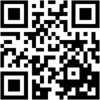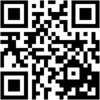Posted: September 3, 2021
Mme Halas Moulton’s
COURSE OUTLINES
2021-22
Welcome to a new school year. Here is an outline of some important policies as well as course summaries and tentative mark breakdowns.
Group marks
Group marks will be earned based on your days present and working with your team. For example, if a project takes ten class days to complete and the group receives a mark of 80%; but you were only there for 5 days you would receive a 40%. Even if you have a legitimate reason for being absent the expectation is that you will make up for the time you missed by contributing to the group from home or working during study block when you are able. Alternatively, if you know you are going to be absent you may choose to work alone if the teacher gives you that option.
Exam incentive
All students attending school and registered in courses with a final exam will be required to write that exam at a value of 30% unless otherwise directed by the district. The only exception will be when a student has met the requirements for the Academic Incentive.
To reach this Academic Incentive, a student must meet the following criteria:
If a student has an 85% in any given subject AND is in good standing (nothing owing for assignments, projects, etc.), the subject teacher may apply one of the three following options to the student’s advantage:
![]() 15% Final Exam, 85% class mark
15% Final Exam, 85% class mark
![]() 30% Final Exam, 70% class mark
30% Final Exam, 70% class mark
![]() 50% Final Exam, 50% class mark
50% Final Exam, 50% class mark
It is understood this policy does NOT apply to any District or Provincial assessments where the exam is determined by those authorities.
In-class project marks/eco-points/shop/co-op marks
You will be marked based on the number of days that you are present and participating in class. If, for example, your group earned a project mark of 70% and you were there 90% of the time your mark would be 63%.
Late Policy
If a student is absent on a due date, a written excuse from a parent or guardian must be presented upon the student’s return, unless work is submitted online (and on time).
Due dates are to be respected. If there is a problem regarding an assignment being passed in on time, the student is expected to see the teacher about an extension prior to the due date. Late assignments must be accompanied by a note.
Students not completing their assignments on time will be expected to come in at lunch until the work is complete.
Sciences humaines (Social Studies) FI9 – period 2&4
This course is designed with the intention exploring all aspects of Canadian identity. We will cover topics including culture, geography, politics, immigration, world issues, and history. This course includes many projects and hands-on activities. Students will have at least an hour of work to complete during their at-home learning days.
Required materials for school: binder with lined paper and a pen, access to a computer at home, pencil crayons, scissors, glue, and other art supplies may be needed for projects to be done at home
Tentative mark breakdown
Historical thinking 30% |
Making connections 30% |
Content 40% |
Histoire ancienne (Ancient History) FI10 – period 3
course is designed to explore history including learning how to read documents, reflect on primary documents, and do research projects. Students will learn about Early Humans, Mesopotamians, Egyptians, Greeks, and Romans. This course includes many projects and hands-on activities. Students will have at least an hour of work to complete during their at-home learning days.
Materials for school: binder with lined paper and a pen, access to a computer at home, pencil crayons, scissors, glue, and other art supplies may be needed for projects to be done at home
Tentative assignments
Historical thinking 30% |
Making connections 30% |
Content 40% |
Graphic Arts 110 – period 5
This course is designed with the intention of learning how to critically appreciate and create graphic designs. Students will explore taking and editing images. This course can be an introductory for students interested in doing design as a career or for personal use like making cards, posters, brochures, and re-touching pictures. The emphasis of this course is on continuous learning as a community of learners. Students with limited computer skills can do very well in this course; however, students with irregular attendance are not likely to succeed as all the work is done in class using our software.
Tentative marking scheme
Visual literacy 20% Foundational skills 40% Visual communication 40% |
Final project that includes aspects of all of the previous units |








